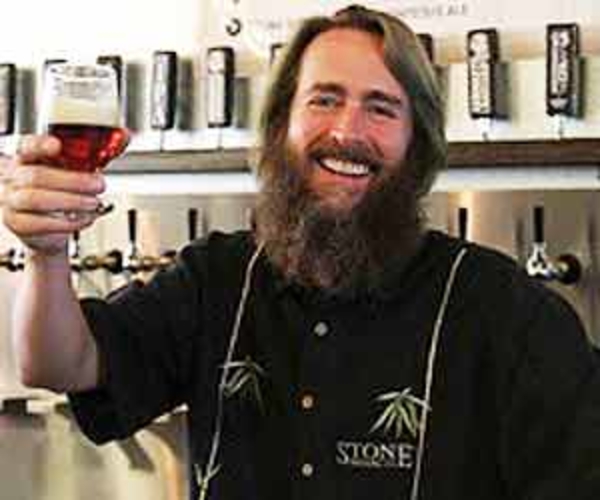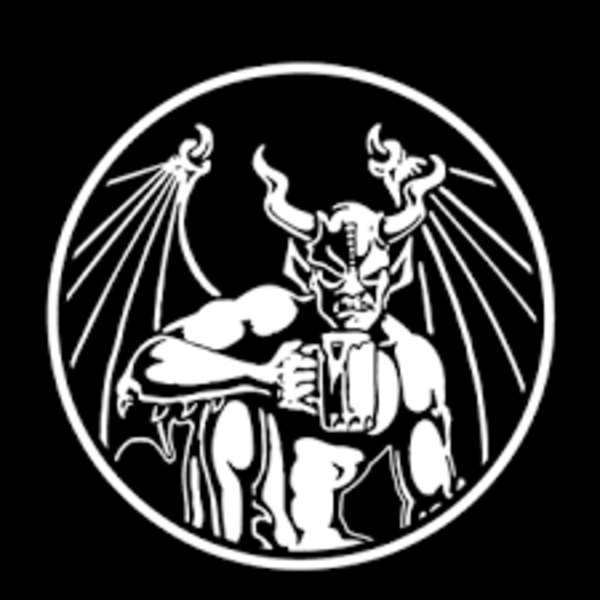Stone's Greg Koch: I'm an IPA diehard
Added: Friday, July 28th 2017

Greg Koch got into brewing because he didn’t like being lied to. The co-founder of Stone Brewing came across Anchor Steam Beer in a “hole in the wall, scruffy dive bar” in Los Angeles in 1987 and describes the drinking experience as his “epiphany”.
“I was elated. I didn’t know beer could taste like this,” he says. “But I was also pissed off. I felt my previous years had been stolen from me because I’d been told the other stuff was beer.” By “other stuff”, he means the mass marketed beers of giant American brewers.
“I don’t like being lied to and as a consumer I don’t expect to have special knowledge about how to find good beer. Back in 1987 there were just three outlets for Anchor Steam in Los Angeles – and that’s a pretty big place. There was nothing else out there. I had to go to libraries to find out about brewing and beer.”
Greg and his business partner Steve Wagner had been home brewing since 1993 and they hatched plans for their own commercial brewery near San Diego.
It opened in 1996 with a 30-barrel plant. “There’s a photo of me at the time staring up at our one fermenter and thinking ‘How will we ever brew that much beer?’” Funding came from Greg’s successful music business along with support from his father – “an angel investor”.
The first beer was Arrogant Bastard Ale, a 7.2 per cent beer that was promoted with the line “You probably won’t like it.” It was big, it was hoppy and bitter, and as far removed from the likes of Budweiser and Miller Lite as it’s possible to be. The gargoyle image that became Stone’s famous logo was used to ward off evil spirits. For Greg and Steve evil spirits include cheap brewing materials such as rice and corn along with pasteurisation. In every possible way, they were giving the giant breweries the finger.
And it worked. People liked the beer in such numbers that in 2005 a new and much bigger brewery was built at Escondido. Ten years after Arrogant Bastard saw the light of day, Greg and Steve brewed their first IPA and have never looked back since.
Today they have some 30 IPAs in their portfolio and they have moved into barrel-ageing and adding fruit. Greg says the inspiration was American IPA and he pulled a face when I asked if he’d been similarly impressed with the British versions.
I pointed out that we were meeting in the celebrated White Horse pub in Parson’s Green, South-west London, where the revival of IPA was kick-started in 1993 by a small meeting convened by the then manager, Mark Dorber. Greg dutifully paid homage, but I don’t think he will ever be a fan of British IPAs.

For Stone, IPA is all about hops. I discovered when I visited the new brewery/restaurant complex in Berlin that Ruination Double IPA has a redoubtable 100 IBUs while the original IPA has 77 with a stunning hop bill that includes Azacca, Calypso, Centennial, Chinook, Ella, Magnum, Motueka and Vic Secret.
Stone has spread its wings. As well as Berlin
http://protzonbeer.co.uk/news/2016/06/23/brewer-leaves-no-stone-unturned-in-berlin
which opened in June 2016, the company has added a new plant in Richmond, Virginia, to supply the East Coast. It’s a bigger plant than Escondido and together all three breweries produce 400,000 barrels a year.
Berlin is a massive venture. The driving force is supplying fresh, unpasteurised beer to European countries as fast as possible. Greg and Steve weren’t happy with the length of time it takes to get beer from the U.S. to Europe. In common with most American craft breweries, Stone is a passionate believer in beer reaching the consumer within hours or a few days of leaving the brewery.
Now Berlin is supplying 24 European countries, including Britain.
Greg says he’s not sure what will happen to the price of his beers in Britain once the country leaves the European Union. He is more concerned at present with building a good relationship with the German government and making beers that don’t fall foul of the ancient purity law, the Reinheitsgebot, which permits only grain, hops, yeast and water in beer.
I wonder what the German bureaucrats will make of Stone Tangerine Express, 6.7 per cent, that’s brewed with tangerines and some pineapple, both in full fruit mode – Greg doesn’t believe in using fruit juice. I can tell the Germans that this a delicious and quenching beer with a big fruity nose and palate with – as you would expect with Stone – a fine balance of floral/citrus hops.
Among the ranks of IPAs brewed by Stone are Go To, a session beer at 4.8 per cent and 65 IBUs, and Delicious, 7.7 per cent, 75 bitterness units, brewed with Lemondrop and El Dorado hops. Hop Revolver is a special brew in which the hops are changed for each batch, while – departing from the freshest possible philosophy – Evening After IPA is aged for a year before being released.
Why is Greg so entranced by IPA? His response picks up on the name of one his beers: “It’s simple – they’re delicious. They have so much flavour impact with so many hop varieties. I’m a die-hard hop head!”
IPA is now the normal style in the U.S., he says. Belgian-style sours and saison, which have been taken up by several American craft brewers, he adds, are small volume beers and not mainstream like IPA.
He says what he calls “the industrial brewers” are a challenge. “They have a different ethos to craft brewers. They’re bad for consumers. I’ve seen AB InBev in action in places like Hong Kong and Singapore, paying bars to take other beers off their shelves.”
He’s concerned at the way the global producers are moving into the craft sector, buying up the likes of Goose Island in the U.S. and Camden Town and Meantime in Britain. But he says consumers and independent brewers will survive the onslaught because “I’m a believer!”





